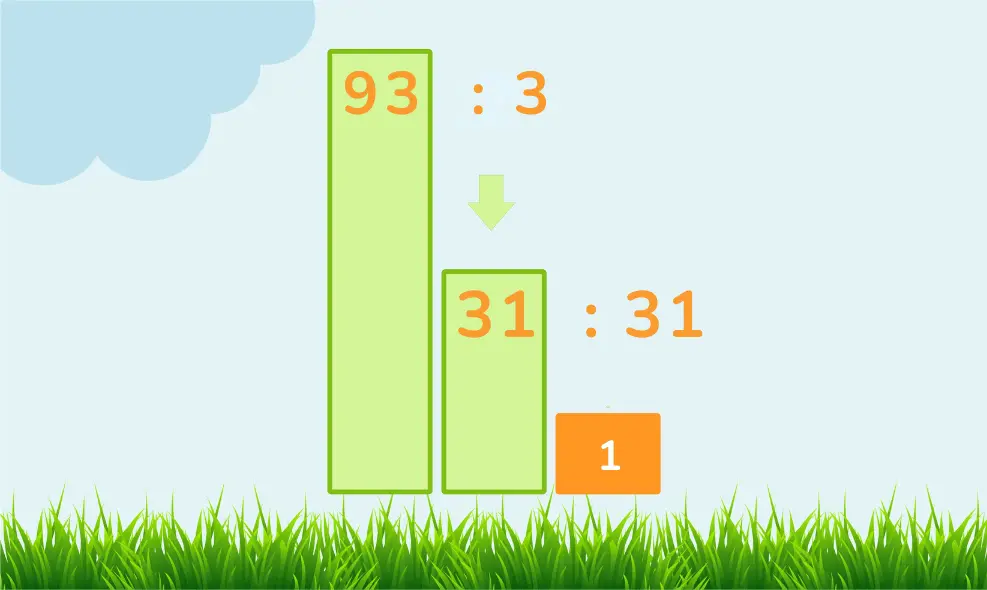Is 2 A Prime Number?
Prime vs. Composite Numbers
Greetings, young math enthusiasts! Today, let’s set sail on a mathematical voyage to determine if 2 is a prime number, and learn more about the difference between prime and composite numbers.

Is 93 a Prime Number?
Or is 93 a Composite Number?
Hey there! Today, we’re going to investigate the number 93 to find out if it’s a prime number. Numbers can be quite fascinating, and understanding them can be fun. So, let’s break down the basics of prime and composite numbers and learn more about 93!


No credit card required

No credit card required
What Are Prime and Composite Numbers?
Is 93 a Prime Number?
Why is 93 Not a Prime Number?
What are the Prime Factors of 93?
What are the Factors of 93?
Does 93 Have 2 Factors?
Is 93 a Perfect Square?
What Type of Number is 93?
Fun Facts About 93
Is 93 a Semiprime Number?
What Are Prime and Composite Numbers?
Before we dig into 93, let’s review what prime and composite numbers are. A prime number is a number greater than 1 that has exactly two factors: 1 and itself. Examples of prime numbers include 2, 3, 5, 7, and 11.
A composite number, on the other hand, has more than two factors. This means it can be divided evenly by numbers other than just 1 and itself. Examples of composite numbers include 4, 6, 8, 9, and 12.
Is 93 a Prime Number?
To figure out if 93 is a prime number, we need to check if it can be divided by any numbers other than 1 and itself. Let’s see if 93 has any divisors.
Why is 93 Not a Prime Number?
To see if 93 is a prime number, we can try dividing it by numbers other than 1 and 93. Let’s start with 2. Since 93 is odd, it can’t be divided evenly by 2. Next, let’s try 3.
When we divide 93 by 3, we get 31. This means both 3 and 31 are factors of 93. Since 93 has factors other than 1 and itself, it’s not a prime number. Instead, it’s a composite number.
What Are Prime Factors of 93?

Prime factors are the prime numbers that multiply together to make the original number.
To find the prime factors of 93, we break it down into its prime parts. We know that 93 divided by 3 equals 31. Since both 3 and 31 are prime numbers, the prime factors of 93 are 3 and 31.
What Are Factors of 93?
Factors of a number are numbers that can be multiplied together to get the original number. The factors of 93 are 1, 3, 31, and 93. This means multiplying 1 by 93 or 3 by 31 gives you 93.
Does 93 Have 2 Factors?
A prime number has exactly two factors: 1 and itself. Since 93 isn’t a prime number, it has more than two factors. The factors of 93 are 1, 3, 31, and 93.
Is 93 a Perfect Square?
A perfect square is a number that can be written as the product of an integer multiplied by itself. For example, 4 is a perfect square because it can be written as 2 × 2, and 9 is a perfect square because it can be written as 3 × 3.
To check if 93 is a perfect square, we need to see if there’s an integer that, when multiplied by itself, equals 93. After checking, we find there’s no such integer. So, 93 is not a perfect square.
What Type of Number is 93?
Now that we know 93 is not a prime number or a perfect square, let’s see what other types of numbers it is:
- Odd Number: 93 is odd because it’s not divisible by 2.
- Composite Number: We’ve learned that 93 is composite because it has more than two factors.
- Semiprime Number: A semiprime number is a composite number made from exactly two prime numbers. Since 93 = 3 × 31, it is a semiprime number.
- Natural Number: 93 is a natural number because it’s a positive integer.
- Whole Number: 93 is a whole number because it’s a non-negative integer.
- Part of a Semiprime Triplet: 93 is the first number in a triplet of consecutive semiprimes, followed by 94 and 95. This makes it part of a unique sequence in mathematics.
- Palindrome in Multiple Bases: 93 is palindromic in bases 2, 5, and 30. This means it reads the same forwards and backwards in these bases.
- Lucky Number: 93 is considered a lucky number. In mathematics, lucky numbers are a special set of numbers generated by a particular “sieve” process similar to the Sieve of Eratosthenes used to find prime numbers.
- Blum Integer: 93 is a Blum integer because it is a semiprime with both prime factors, 3 and 31, being Gaussian primes. This makes it an interesting number in number theory.
Fun Facts About 93
Let’s wrap up with some fun facts about the number 87:
Atomic Number: 93 is the atomic number of neptunium, which is a type of metal called an actinide.
Phone Code: If you want to make an international phone call to Afghanistan, you need to dial the code 93 first.
Book Identifier: 93 is one of the codes used for books published in India. This code helps identify where the book was published.
French Department: In France, the number 93 represents the department of Seine-Saint-Denis, which is a suburb of Paris. This area has many immigrants and low-income residents, and it is often mentioned by French rappers.
Persian Finger Counting: In classical Persian culture, the number 93 is shown by making a closed fist. Poets from around 1 CE would use this symbol to describe someone as not generous, saying their hand made “ninety-three.
Is 93 a Semiprime Number?
Yes, 93 is a semiprime number because it’s made from exactly two prime numbers, 3 and 31. This gives it a special place among composite numbers.
Conclusion
So, we’ve discovered that 93 is not a prime number but a composite number with four factors: 1, 3, 31, and 93. It’s also a semiprime number because it’s made from two prime numbers. While 93 isn’t a perfect square, it’s an interesting number with various properties and fun facts. Understanding numbers like 93 helps us appreciate the fascinating world of mathematics!
Learn More About Prime Numbers
© 2024 Smartick. All Rights Reserved.
